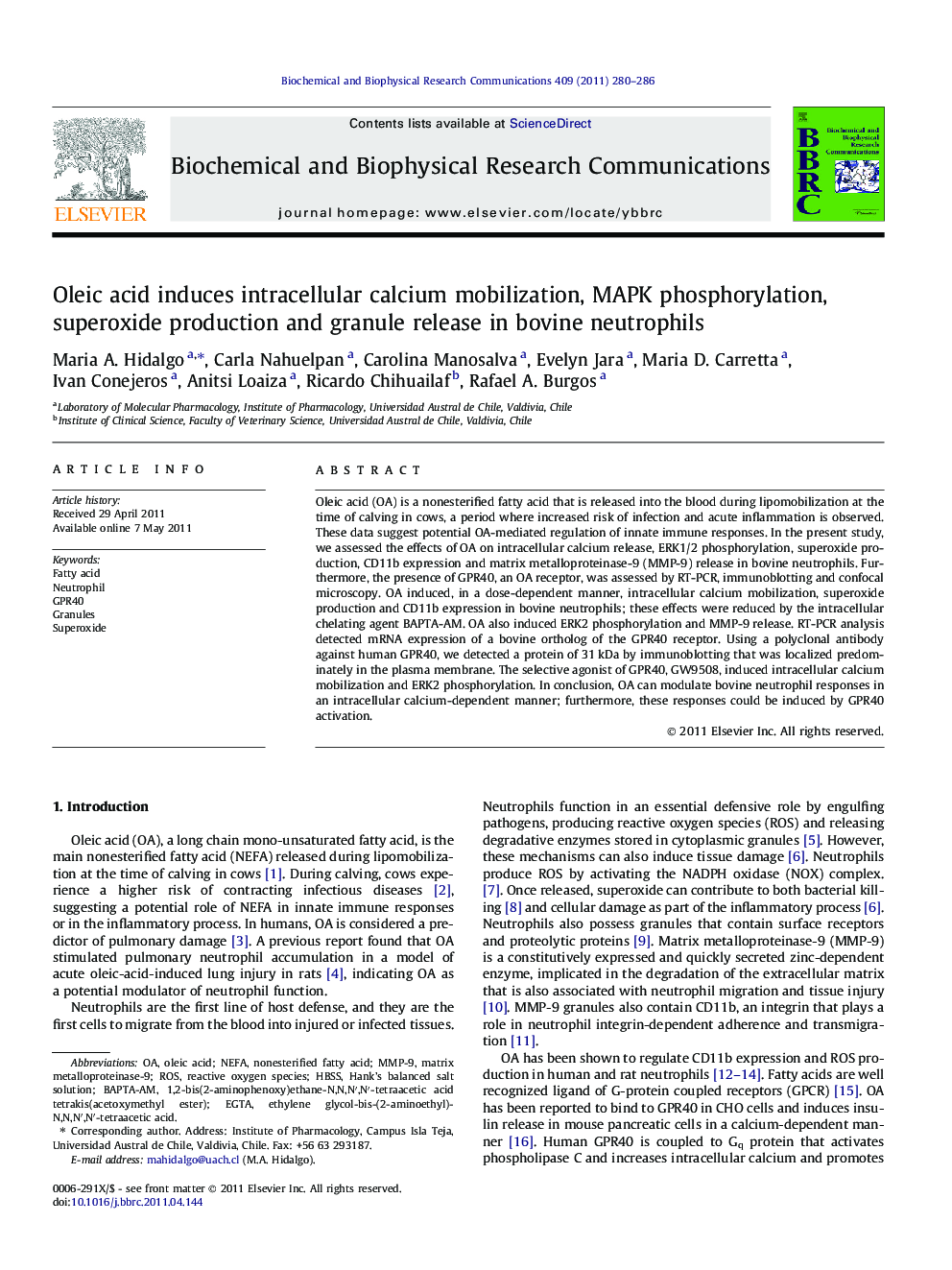| Article ID | Journal | Published Year | Pages | File Type |
|---|---|---|---|---|
| 1930455 | Biochemical and Biophysical Research Communications | 2011 | 7 Pages |
Oleic acid (OA) is a nonesterified fatty acid that is released into the blood during lipomobilization at the time of calving in cows, a period where increased risk of infection and acute inflammation is observed. These data suggest potential OA-mediated regulation of innate immune responses. In the present study, we assessed the effects of OA on intracellular calcium release, ERK1/2 phosphorylation, superoxide production, CD11b expression and matrix metalloproteinase-9 (MMP-9) release in bovine neutrophils. Furthermore, the presence of GPR40, an OA receptor, was assessed by RT-PCR, immunoblotting and confocal microscopy. OA induced, in a dose-dependent manner, intracellular calcium mobilization, superoxide production and CD11b expression in bovine neutrophils; these effects were reduced by the intracellular chelating agent BAPTA-AM. OA also induced ERK2 phosphorylation and MMP-9 release. RT-PCR analysis detected mRNA expression of a bovine ortholog of the GPR40 receptor. Using a polyclonal antibody against human GPR40, we detected a protein of 31 kDa by immunoblotting that was localized predominately in the plasma membrane. The selective agonist of GPR40, GW9508, induced intracellular calcium mobilization and ERK2 phosphorylation. In conclusion, OA can modulate bovine neutrophil responses in an intracellular calcium-dependent manner; furthermore, these responses could be induced by GPR40 activation.
► Presence of a bovine ortholog GPR40 receptor in bovine neutrophils. ► Oleic acid and the selective agonist of GPR40 GW9508 activate second messenger. ► Oleic acid stimulates superoxide production and degranulation. ► Intracellular calcium controls neutrophil responses induced by oleic acid.
